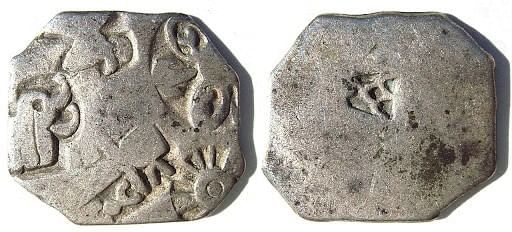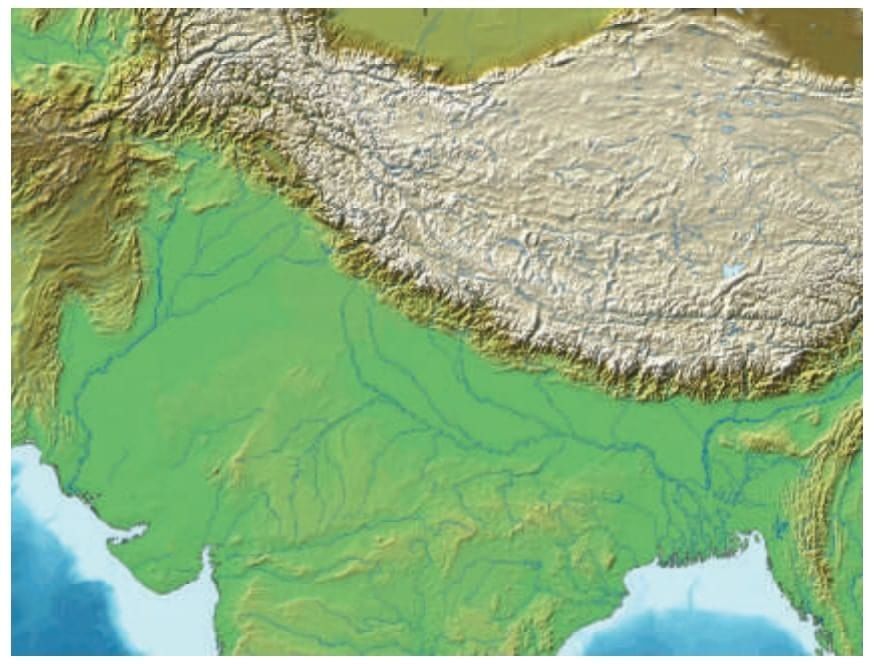Important Questions: New Beginnings: Cities and States | Social Science Class 7 - New NCERT PDF Download
Q1: What marked the end of India’s First Urbanisation?
a) Rise of mahajanapadas
b) Introduction of coins
c) Decline of the Harappan civilization
d) Formation of janapadas
Ans: c)
The end of India's First Urbanisation is attributed to the decline of the Harappan civilization, which led to the abandonment of urban centers and a shift towards rural lifestyles.
Q2: What is a janapada?
a) A large empire
b) A territory where a clan settled
c) A type of coin
d) A democratic council
Ans: b)
A janapada refers to a territory where a clan settled, marking the early formation of political units in ancient India.
Q3: Which mahajanapada was located in present-day Bihar?
a) Magadha
b) Kosala
c) Avanti
d) Vatsa
Ans: a)
Magadha was a prominent mahajanapada located in present-day Bihar, known for its significant role in ancient Indian history.
Q4: What type of governance did the Vajji mahajanapada follow?
a) Monarchy
b) Gana or sangha
c) Dictatorship
d) Theocracy
Ans: b)
The Vajji mahajanapada followed a Gana or sangha system, which was more democratic in nature compared to monarchies.
Q5: What material was commonly used for punch-marked coins?
a) Iron
b) Gold
c) Bronze
d) Silver
Ans: d)
Silver was the primary material used for punch-marked coins, which were significant in ancient trade.
Q6: Which trade route connected northwest India to the Ganga plains?
a) Dakshinapatha
b) Uttarapatha
c) Kalinga Path
d) Coastal Route
Ans: b)
The Uttarapatha trade route was crucial for connecting northwest India to the Ganga plains, facilitating trade and cultural exchange.
Q7: Which varna included traders and farmers?
a) Brahmins
b) Kshatriyas
c) Vaishyas
d) Shudras
Ans: c)
The Vaishyas varna included traders and farmers, playing a vital role in the economy of ancient India.
Q8: What made the Ganga plains ideal for mahajanapadas?
a) Dry climate
b) Fertile land for agriculture
c) Lack of rivers
d) Dense forests
Ans: b)
The fertile land for agriculture in the Ganga plains made it an ideal location for the establishment of mahajanapadas.
Q9: Which of the following southern kingdom was known for trading precious stones?
a) Magadha
b) Chola
c) Kosala
d) Vajji
Ans: b)
The Chola kingdom was renowned for its trade in precious stones, contributing to its wealth and influence.
Q10: Which innovation significantly contributed to the Second Urbanisation by improving agriculture and weaponry?
a) Iron metallurgy
b) Bronze metallurgy
c) Silver coinage
d) Stone architecture
Ans: a)
Iron metallurgy, perfected by the late 2nd millennium BCE, enabled better tools for agriculture and sharper weapons, facilitating the growth of mahājanapadas .
Q11. Name two mahajanapadas and their capitals.
Ans:
- Magadha - Capital: Rajagriha
- Vatsa - Capital: Kauśāmbī
Q12. What is a gana or sangha, and give one example of a mahajanapada that followed it?
Ans: A gana or sangha is a democratic system where decisions are made by a council through discussion or voting. An example of a mahajanapada that followed this system is the Vajji mahajanapada.
Q13. What is the difference between a janapada and a mahajanapada?
Ans: A janapada refers to a territory where a clan has settled. In contrast, a mahajanapada is a larger state formed by the merging of several janapadas.
- A janapada is typically smaller and associated with a single clan.
- A mahajanapada consists of multiple janapadas, often featuring fortified cities.
- Mahajanapadas emerged as trade networks expanded, leading to greater political organisation.
Q14. Define ‘punch-marked coins’ and their purpose.
Ans: Punch-marked coins are among the earliest forms of currency in India, primarily made of silver.
- These coins feature stamped symbols that were created by punching designs into the metal.
- They were used for trade in the mahajanapadas, which were ancient kingdoms.
- The coins facilitated commerce by providing a standard medium of exchange.
Over time, other metals like copper and gold were also used to create coins.
Q15: What is the varna system, and name different varnas with their roles.
Ans: The varna system classifies society into four main groups based on their roles:
- Brahmins: They are the teachers and priests, responsible for spreading knowledge and performing rituals.
- Kshatriyas: These individuals are warriors and rulers, tasked with protecting society and engaging in warfare.
- Vaishyas: They focus on trade, business, and agriculture to enhance the community's wealth.
- Shudras: This group comprises artisans, craftsmen, and service workers who support the other varnas.
Q16. Describe the factors that contributed to the growth of mahajanapadas in the Ganga plains, with examples.
Ans: The growth of mahajanapadas in the Ganga plains was influenced by several key factors:
- Fertile Land: The rich soil of the plains supported agriculture, leading to surplus food production. For instance, the region of Magadha flourished due to its agricultural output.
- Iron Ore: Proximity to mountains provided access to iron, which was essential for making tools and weapons. This advancement improved farming techniques, such as the use of iron ploughs in Kosala.
- Trade Networks: The establishment of new trade routes, like Uttarapatha, connected various regions, enhancing commerce. Cities such as Kauśāmbī emerged as significant trade hubs.
These factors contributed to the development of large, fortified cities like Rajagriha, which supported population growth and economic stability. The use of iron and the expansion of trade also facilitated cultural exchanges, marking a significant period known as India's Second Urbanisation. Fertile Ganga Plains
Fertile Ganga Plains
Q17: Explain the governance systems in mahajanapadas, comparing monarchies and ganas/sanghas.
Ans: Mahajanapadas had two governance systems: monarchies and ganas/sanghas.
Monarchies: The raja held primary authority, supported by ministers and an assembly (sabha or samiti). His role was hereditary, passed to his son. He collected taxes, maintained law, and built defenses, e.g., Magadha under its rajas. The raja’s power was central, but he followed assembly advice.
Ganas/Sanghas: These were early republics where the sabha or samiti had more power, making decisions by discussion or voting, even choosing the raja. Examples include Vajji and Malla. These systems were democratic, with collective decision-making.
Monarchies centralized power, while ganas/sanghas distributed it, reflecting diverse political structures. Both systems supported urban growth, but ganas/sanghas were among the world’s earliest democratic traditions, emphasizing community participation.
Q18: Discuss the social organization in mahajanapadas through the varna-jāti system and its impact.
Ans: The varna-jāti system organized society in mahajanapadas based on roles and jobs.
Varna: This system categorized roles broadly. Four groups from the Vedic texts are:
- Brahmins (teachers/priests),
- Kshatriyas (warriors),
- Vaishyas (traders/farmers), and
- Shudras (artisans/workers).
Jāti
- Specific occupational groups, like metalworkers or farmers, with unique customs for marriage or rituals, passed down through families. Jātis were more detailed, sometimes splitting into sub-jātis.
- Initially, the Jāti system was flexible, allowing job changes (e.g., farmers becoming traders). The system ensured stability by organizing labor in growing urban centres like Rajagriha.
- Over time Jāti system it became rigid, leading to inequalities, especially for lower jātis, which worsened later under British rule.
- The system shaped social interactions, cultural practices, and economic roles, but its rigidity caused unfair treatment, influencing India’s social structure significantly during and beyond the mahajanapada period.
|
23 videos|272 docs|12 tests
|
FAQs on Important Questions: New Beginnings: Cities and States - Social Science Class 7 - New NCERT
| 1. What are the key features of new cities and states that emerged during the period of urbanization? |  |
| 2. How did the concept of new beginnings influence the development of urban areas? |  |
| 3. What role did government policies play in shaping new cities and states? |  |
| 4. How did historical events contribute to the establishment of new cities and states? |  |
| 5. What challenges did new cities and states face during their development? |  |

















